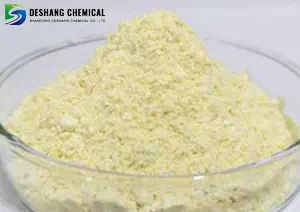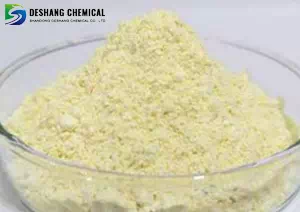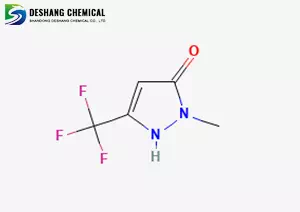All Categories



1-Methyl-3-(trifluoromethyl)-1H-pyrazol-5-ol CAS 122431-37-2,1-Methyl-3-(trifluoromethyl)-1H-pyrazol-5-ol, CAS 122431-37-2
Acidity: The hydroxyl group is weakly acidic (pKa≈8.08) and can participate in salt formation reactions.
CAS : 122431-37-2
Formula : C5H5F3N2O
Mol. wt. : 166.1
EINECS : 626-417-3
| CAS | 122431-37-2 |
| Molecular formula | C5H5F3N2O |
| Molecular weight | 166.1 |
| EIENCS | 626-417-3 |
| Form | Crystalline Powder or Needles |
| Melting point | 177-179 °C |
| boling point | 224.4±35.0 °C |
| Density | 1.50±0.1 g/cm3 |
| Solubility | / |
| PKA | 8.08±0.28 |
| Color | Light yellow |
| Storage temp | / |
Molecular formula and structure
Molecular formula: C₅H₅F₃N₂O
Molecular weight: 166.10 g/mol
Structure: The pyrazole ring is substituted with a hydroxyl group at the 5-position, a methyl group at the 1-position, and a trifluoromethyl group at the 3-position (a strong electron-withdrawing group), belonging to a fluorinated heterocyclic compound.
Appearance: White to light yellow crystalline powder or needle-like crystals, stable under light, hygroscopic and should be stored in a sealed container away from light.
Reaction characteristics
Acidity: The hydroxyl group is weakly acidic (pKa≈8.08) and can participate in salt formation reactions.
Stability: Decomposes when exposed to strong oxidants and may defluorinate at high temperatures.
1. Pesticide intermediates (dominant application, accounting for 80% of demand)
Synthesis of sulfoxpirazole
As a key precursor, the herbicide Pyroxasulfone was synthesized through a three-step reaction of hydroxymethylation - etherification - condensation.
Advantages: The dosage is only 1/10 of that of traditional herbicides (such as acetochlor), with a long-lasting effect, and is suitable for crops such as wheat, corn, and rice.
Other pesticides: Fluorine-containing heterocyclic structure modules for synthetic insecticides and fungicides.
2. Pharmaceuticals and Functional materials
Pharmaceutical intermediates: Used in the construction of antifungal and anticancer drug molecules (trifluoromethyl enhances biological activity).
OLED material: Fluorine-containing groups enhance electron transmission efficiency and are applied in flexible display panels.
3. Organic synthesis reagents
Fluorination reagent: Introduce trifluoromethyl to the target molecule to enhance the metabolic stability of the compound.
Health risk
Acute toxicity: The oral LD₅₀ in rats was not clearly defined, but it was marked as ingestion toxic (R25), and accidental ingestion caused burns to the digestive tract.
Irritation: Redness and swelling may occur upon contact with eyes or skin (R36/37/38). Rinse immediately for 15 minutes.
Carcinogenicity: There is no definite data, but long-term exposure should prevent inhalation of dust.
Operation protection
Personal equipment: Nitrile gloves + gas mask + goggles + anti-static clothing.
Storage conditions: Sealed and protected from light, humidity < 60%, away from oxidants/acids.
Leakage treatment: Adsorb with sand and then incinerate. Do not discharge into water bodies (fish LC₅₀ > 1000 mg/L).
Transportation specifications
Hazard category: UN 2811 (Class 6.1 toxic substance), PGIII packaging.
* Prompt reply and 24 hours online, professional team to provide best price and high quality product.
* Sample testing support.
* Every batch of products will be tested to ensureits quality.
*The packing also can be according the customers` requirment.
*Any inquiries will be replied within 24 hours.
*we provide Commerical Invoice, Packing List, Bill of loading, COA , Health certificate and Origin certificate. If your markets have any special requirements, let us know.